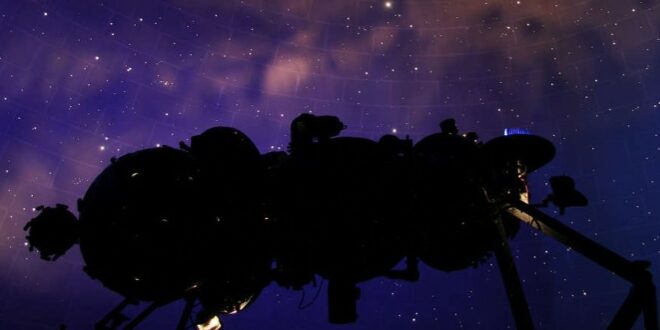Last week, when Wits University announced a 55 million rand donation from Anglo American to transform the old Johannesburg Planetarium into a “digital dome,” it promised more than just a facelift.
The imposing structure that stands beside the university’s East Campus Gate has welcomed more than 4 million visitors since it was built in the late 1950s. Now, it is being repurposed for the 21st century.
“We’re doing a high-tech, IMAX-like 360-degree theatre, and that’s just better,” Professor Roger Dean, director of the Wits Center for Astrophysics, said at an event unveiling the new vision on Monday. However, he said it will serve a larger purpose: “to help researchers in all disciplines to visualize data in a profound way.”
“For many researchers across fields, we feel like we are drowning in data, which combined with the challenge of data sets becoming more complex and more multidimensional. A facility like the new Wits Anglo American Digital Dome is a way to hone a more intuitive and immersive understanding of big data, where We will be able to visualize our work.”
Give examples such as teaching anatomy to first-year medical students, visualizing a shower of particles at the Large Hadron Collider at CERN in Switzerland, or testing new games designed by game design students.
The reconstruction of the planetarium is part of a program to celebrate the university’s centenary this year, led by Vice-Chancellor and Principal Professor Zeblon Vilakazi. He also emphasized the role the new structure will play in extending digital technology to other scientific disciplines, “from climate modeling, and applications of artificial intelligence, to new areas in the digital arts.”
He said, “There are many joint ventures with common goals, developing high-level skills to move our economy into a digital age and creating employees of the future to co-create new useful knowledge.”
He reminded the audience that Wits was first founded as a mining school in Kimberley, and continues to harness intellectual capacity and strength to make mining safer and more sustainable. But the Digital Dome project was about something else.
“This is our moment of departure, which will nurture and inspire the next generation of innovators, change-makers and solution-finders. They will dream, despite our challenges, beyond our imagination and take us into the next era as a country and as a continent.”
However, it was Anglo American CEO Duncan Wanblad who put a full perspective on what the initiative means to innovation and discovery:
“This high-tech, research-intensive facility will enable future generations of ambitious African students to contribute to solving some of society’s most pressing challenges.
“Whether it enables researchers to map layered biodiversity data, provides access for the public to explore the universe with telescopes, such as the Square Kilometer Array, or simply explores new ways to visualize and present highly complex datasets, this new facility will become an expression of who we are as a people.” Here in South Africa: curious and innovative.”
While it is recognized that the world is going through a period of unprecedented disruption, and that the amount of available data has exploded in recent years, it is less known that the analysis of large data sets will become a fundamental basis for competition.
Particularly for a country like South Africa, Wannblad said, this will foster new waves of productivity, growth, and innovation.
“Data is a challenge, and it challenges our world as we know it today. The mining industry is no different in terms of that challenge. Our industry is very rich in data, and we harness a fraction of that data, whether it’s the temperature in truck tires, all the way through integrated and digital machining centers .
“Data science, machine learning, and artificial intelligence are all elements that enable us to turn huge amounts of this data into predictive intelligence. This gives us information from the sensor all the way to the boardroom.”
Originally posted 2022-12-02 10:42:22.
